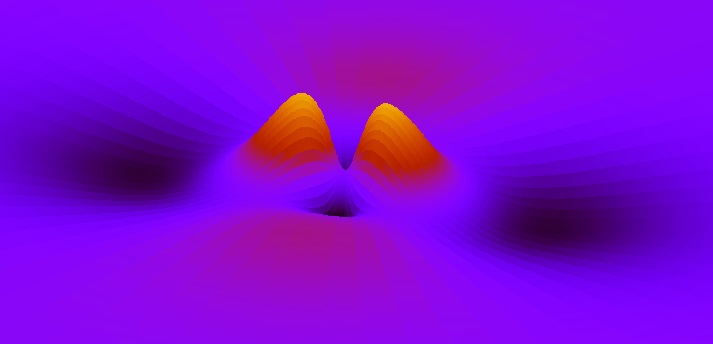2015/04/09
A cooperation between theoretical and experimental physicists has uncovered previously unknown quantum states inside atoms. The results, described in a paper published today in the journal Nature Communications, allow a better understanding of some aspects of electron behaviour in atoms, which in turn could lead to better insights into technologically relevant materials.
In this study, scientists from European XFEL and the Center for Free Electron Laser Science (CFEL) at DESY examined the unknown quantum states in atoms of the noble gas xenon using DESY’s X-ray laser FLASH. The bright X-ray light of free-electron lasers such as FLASH and the European XFEL allowed the scientists to observe these states for the first time. (CFEL is a joint venture between DESY, the University of Hamburg, and the Max Planck Society.)
Atoms can develop an electrical charge by losing or gaining one or more electrons. This process, called ionization, was thought to be fairly simple. As an electron departs, it can briefly “hang” between the different locations of electrons in the atom, also called “shells”. In the world of quantum mechanics, this brief pause—lasting less than a femtosecond, or a quadrillionth of a second—is enough to be measured as what is called a “resonance”.
“In a resonance, the electrons are ‘talking’ to each other”, says Michael Meyer, a leading scientist at European XFEL. This conversation of sorts can be picked up on a spectrograph, and, in most atoms, it shows up in a very narrow energy range.
Yet for the past half century, scientists also have noted a strange resonance in atoms of the noble gas xenon and some rare earth elements. In contrast to other resonances, it covers a very broad energy range. This became known as the “giant dipole resonance”. “There were no good tools to investigate the giant dipole resonance more deeply”, says Meyer. “But extreme-ultraviolet and X-ray FELs present an opportunity to re-examine xenon’s strange property.” Such facilities have the possibility of studying nonlinear processes, or phenomena that are not a direct result of a single interaction—in the case of photoionization the disappearance of one photon, with its energy being transferred to the electron that can thus escape the atom. The extraordinary intensity of FELs makes non-linear processes observable—in this case, a process whereby two photons disappear, simultaneously transferring their energy to the escaping electron.
This has become evident when Tommaso Mazza, a scientist in Meyer’s group at European XFEL, and others investigated the ionization of xenon atoms under intense FEL radiation at DESY’s FLASH. In parallel, DESY scientist Robin Santra, the leader of the CFEL theory group, and a student in his group, Antonia Karamatskou, thought there was something more to the giant dipole resonance. They worked off of a forty-year old suggestion that had been largely ignored: that xenon actually had not one but two resonances, and that earlier spectrographic techniques could not distinguish between them. In contrast, X-ray FELs can target very specific energies in the electronic structure of the atom using just two individual particles of light, enabling scientists to see both resonances more clearly.
Santra and Karamatskou made calculations describing the energies of the resonances. The data from the experiments performed at FLASH by Tommaso Mazza and others match Santra’s and Karamatskou’s predictions. This is the first evidence of the giant dipole resonance being composed of two other resonances.
Both Santra and Meyer think that there is far more to the behaviour of electrons within atoms in general than has been previously understood. The result point to not yet fully understood aspects of how atoms function. “We don’t even yet understand why there might be a second resonance”, Santra says. “Many people think simple atomic physics is figured out, but as this collaboration has shown, there is a lot of hidden stuff out there!”
Also, the experiment has shown that FELs can be highly sophisticated tools for studying quantum physics. Santra says he expects the European XFEL to expand these possibilities even further. Europe's future X-ray laser is currently under construction, reaching from the DESY campus in Hamburg to the neighbouring town of Schenefeld. Currently, the European XFEL has twelve member countries (www.xfel.eu).
Reference:
Sensitivity of nonlinear photoionization to resonance substructure in collective excitation; T. Mazza, A. Karamatskou, M. Ilchen, S. Bakhtiarzadeh, A.J. Rafipoor, P. O’Keeffe, T.J. Kelly, N. Walsh, J.T. Costello, M. Meyer & R. Santra; Nature Communications, 2015; DOI: 10.1038/ncomms7799















